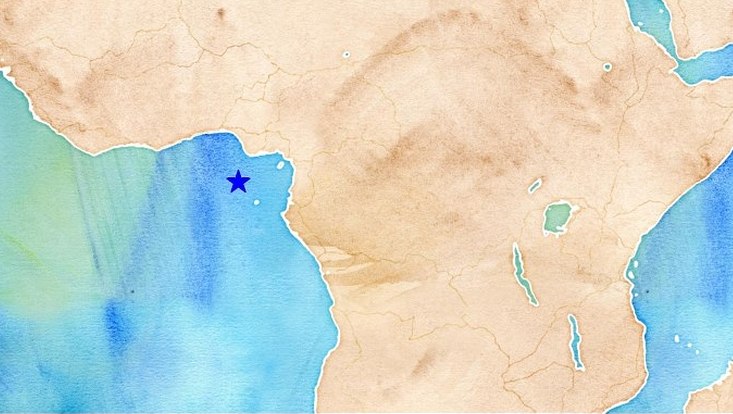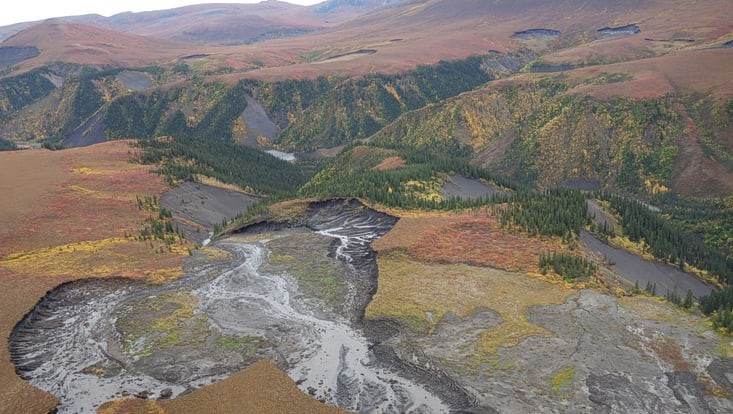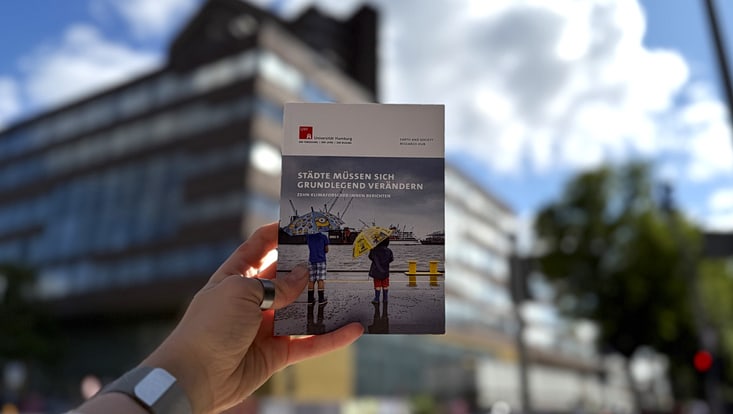Where does the 26-second note come from?"As if a ten-kilometer-long clarinet were buried in the ground"
7 August 2023, by Niklas Keller

Photo: UHH/CEN/C. Hadziioannou
Like a very, very low note: Seismologists have been puzzling over vibrations originating beneath the sea in the Gulf of Guinea since the 1960s. The signal can even be picked up all over the world. Dr. Charlotte Bruland and Prof. Céline Hadziioannou have embarked on a study in search of clues. Despite new findings, the mystery remains.
Is it the swell of the sea or a volcanic system under the earth? For several decades, seismometers have been able to record a regular signal whose oscillation always lasts exactly 26 seconds. That is many times lower than the human ear could perceive.
Now, CEN geophysicists Dr. Charlotte Bruland and Prof. Céline Hadziioannou inspected more recordings and discovered that in addition to the 26-second tone, there is a second kind of noise; the researchers call it a gliding tremor. "This tremor ramps up linearly - but only every few days, and it can last for several hours or days. Sometimes, however, you don't hear it for a month," Hadziioannou said. No clear explanation can be found for this signal either. Are the two related?
A system like a clarinet
The 26-second tone can be thought of as if it were coming from a musical instrument, she said. "We compare it to a bass clarinet. It's as if there were a ten-kilometer-long clarinet buried in the ground," says Hadziioannou. That's how big it would have to be to produce such a deep note. The bigger, the lower the note. But what's really down there?
For their investigation of the cause, Bruland and Hadziioannou considered the tremor produced by volcanic systems worldwide. Some of these systems sounded similar – but the 26-second tone is much lower than those produced by other subsurface systems, which are typically also smaller.
"We suspect that gas regularly escaping from the Earth's interior is forced through some kind of volcanic conduit and then through smaller cracks. That might create the signal," Hadziioannou says. Ocean swells could affect this process, although the associated frequencies are typically higher than what is observed here.
For their study, Bruland and Hadziioannou primarily used data from seismometers in Cameroon and Morocco, near the source site. But the signals were also evident in data from seismometers located around the world. "To better understand what's going on underground, we would need to obtain data on site." The problem: "There is piracy in the Gulf of Guinea. In addition, oil and gas exploration is going on in the region." This complicates research in the area, says Hadziioannou.
Curiosity and understanding volcanic systems
What motivates the researchers? "Above all, curiosity," replies Hadziioannou. The fact that the phenomenon also interests many other scientists was also evident in the review process before the study was published. "Many reviewers suggested additional mechanisms that might be causing the phenomenon."
A next step could be to recreate a volcanic system as a computer simulation. This would allow verification that the physical mechanisms really do cause such signals. So is the mystery solved? Not quite. But there is at least the realization: A volcanic system as the origin of the 26-second tone is particularly likely.
Publication:
Bruland C, Hadziioannou C (2023): Gliding tremors associated with the 26 second microseism in the Gulf of Guinea; Nature comms earth & environment, 4:176


